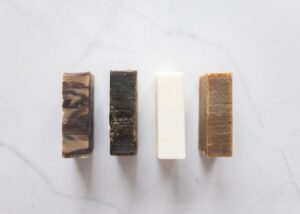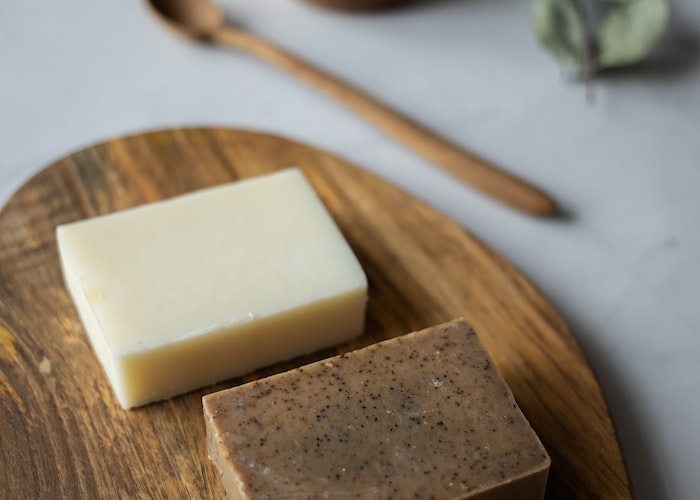Today, achieving a radiant complexion is a common goal. While there are several skin products available, each claiming to address several skin issues, including hyperpigmentation, dark spots, etc. However, we all know not all products are created equally and don’t give you the desired results.
So, if you are looking for a natural product that is gaining huge attention nowadays is kojic acid. Found in various skincare products, like kojic acid soap, this natural compound is believed to have skin-lightening properties. But what exactly is kojic acid, and how does it work?
This article delves into the science behind kojic acid soap, explaining how it is thought to lighten the skin. By exploring its mechanisms and potential effects, we aim to uncover the facts about this widely used skincare ingredient.
Understanding Kojic Acid: Origins and Properties
Kojic acid, a naturally occurring compound, was first discovered in Japan in the early 20th century. Initially utilized in the fermentation process of certain fungi to produce staples like soy sauce and rice wine, its remarkable skin-lightening properties were eventually unveiled, propelling it into the realm of skincare. The primary mechanism by which kojic acid exerts its effects is through the inhibition of tyrosinase, a pivotal enzyme in the production of melanin, the pigment responsible for determining skin, hair, and eye color.
Inhibition of Melanin Production
At the heart of kojic acid’s skin-lightening mechanism lies its ability to inhibit the activity of tyrosinase. Melanin is produced through a series of enzymatic reactions catalyzed by tyrosinase. Kojic acid works by binding to the copper ions present in the active site of tyrosinase. This binding prevents the enzyme from effectively converting tyrosine, an amino acid, into dopaquinone, a precursor in melanin synthesis. As a result, the overall production of melanin is disrupted, leading to a reduction in skin pigmentation.
Antioxidant Properties of Kojic Acid
Beyond its role as a tyrosinase inhibitor, kojic acid also exhibits antioxidant properties. Oxidative stress, often induced by factors like UV radiation and environmental pollutants, can trigger an overproduction of melanin. Kojic acid’s antioxidant capacity helps neutralize harmful free radicals that contribute to this oxidative stress. By minimizing oxidative damage, kojic acid indirectly aids in maintaining an even skin tone and preventing excessive melanin synthesis.
Synergy with Other Ingredients
Kojic acid’s effectiveness in skin lightening can be further enhanced when combined with other complementary ingredients. For instance, pairing kojic acid with alpha hydroxy acids (AHAs) or beta hydroxy acids (BHAs) can facilitate better penetration into the skin. AHAs and BHAs exfoliate the top layer of the skin, removing dead skin cells and allowing kojic acid to penetrate more effectively. Additionally, incorporating kojic acid into a formulation with niacinamide can yield synergistic benefits. Niacinamide not only aids in reducing inflammation but also inhibits the transfer of melanin to skin cells, thus enhancing kojic acid’s lightening effects.
Regulation of Tyrosinase Gene Expression
Apart from directly inhibiting tyrosinase activity, kojic acid has been found to modulate the expression of the tyrosinase gene. Research suggests that kojic acid can downregulate the expression of the tyrosinase gene, thereby reducing the overall availability of the enzyme for melanin synthesis. This dual approach—targeting both enzyme activity and gene expression—underscores kojic acid’s potency in addressing hyperpigmentation and uneven skin tone.
Caution and Considerations

While kojic acid holds promise as a skin-lightening agent, there are certain considerations that individuals should be aware of. Kojic acid can potentially cause skin sensitivity, especially in higher concentrations. It is advisable to perform a patch test before incorporating products containing kojic acid into your skincare routine. Moreover, individuals with sensitive or reactive skin should consult a dermatologist before using such products.
Furthermore, prolonged or improper use of kojic soap can lead to unintended consequences. Overuse may result in skin irritation, redness, and a paradoxical increase in pigmentation—a phenomenon known as “rebound hyperpigmentation.” To mitigate these risks, it is recommended to follow the manufacturer’s instructions and, if possible, seek professional guidance when introducing new skincare ingredients.
Conclusion
In the quest for luminous skin, the scientific insights behind kojic acid’s skin-lightening properties shed light on its potential benefits. By inhibiting tyrosinase activity, exerting antioxidant effects, and modulating gene expression, kojic acid offers a multifaceted approach to tackling hyperpigmentation and achieving a more even skin tone.
However, prudence and moderation are key when incorporating kojic acid products into one’s skincare regimen. As with any skincare ingredient, a well-informed and cautious approach is essential to reap the rewards of kojic acid while safeguarding the health and integrity of your skin.



